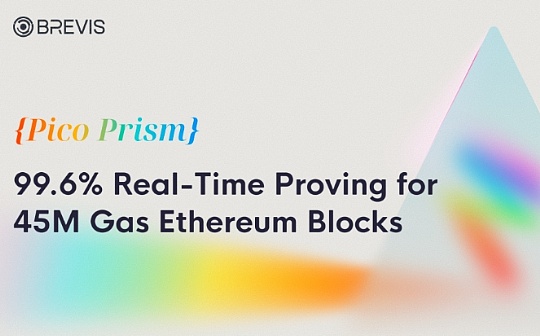
Author: Lane Rettig, former core developer of Ethereum and former employee of the Ethereum Foundation; Translation: Bitchain Vision xiaozou
I have been immersed in the Ethereum community for nearly eight years and am an active member.From the end of 2017 to mid-2019, I worked for the Ethereum Foundation in different identities.At that time and even today, I have invested a lot in the Ethereum projects and communities in both social and economic levels, and I sincerely hope that Ethereum will succeed.
Ethereum has long been ahead of the competition, and its technology and community have made other projects unattainable.However, this advantage has always been fundamentally unstable – although the surface data is impressive (high market value, huge TVL, block full load, etc.), the underlying problems always exist.Apart from DeFi and stablecoins, Ethereum has almost never had a truly useful application, and users are basically limited to trading and speculation.Ethereum had a golden window period of more than five years to consolidate early results. Now this window of opportunity is closing rapidly and may have completely disappeared.
Despite the great efforts (and perhaps for this reason) putting into the success of Ethereum and its community, this topic has made me particularly difficult to write.On the one hand, I have too many opinions on the current situation of Ethereum—especially compared to the performance of other crypto ecosystems—I have too many opinions to say.I have spent a lot of time thinking about this over the past eight years, perhaps more than anything else.
On the other hand, writing this article must be honest and critical about the many current phenomena.After leaving the Ethereum Foundation in 2019, I strongly wanted to publicly criticize the foundation and even the entire Ethereum ecosystem, but in the end I chose to remain silent – not only because the time is not yet ripe, but also because I need time to settle down and distance observation.Now, it’s time.
In addition, Ethereum’s recent performance has also contributed to my decision to write this article – multiple metrics show that it is in poor condition.As an asset, ETH has been seriously underperformed in the market recently, with the ETH/BTC exchange rate approaching historical lows and continuing to decline for several years, and market sentiment is also sluggish.
After communicating with many “old” friends who participated in Ethereum at the same time as me, I found that the current community is in a state of depression.Recently, I can’t even find someone who is really bullish on Ethereum’s future.We have experienced many market cycles together, through the governance crisis, the FTX and Terra/Luna collapse and the long bear market that followed, but now we are even more pessimistic.What is even more worrying is that many old members like me feel uncomfortable with pointing out the problem outright – this is itself a sign of the worrying situation in Ethereum.
I still think there is a possibility of a comeback on Ethereum, but the chances are becoming increasingly slim.The following are the problems and reform directions in my eyes.(Since there are many things to write, this article will be the beginning of a series of articles, and the complete discussion is expected to take several weeks.)
Question 1: Study worship
If we want to point out Ethereum’s biggest mistake, it is to put the cart before the horse and put research above the application.Since its inception, Ethereum culture, foundations and core power classes have sacred research, sacrificing important dimensions such as application development, usability and simplicity.In the Ethereum ecosystem, researchers occupy the spotlight center – they get top lecture seats and podcast interview opportunities, enjoying nearly complete freedom within the foundation: independent selection of research directions, global tours, etc.Research-heavy projects receive most of the funding.As a former Ethereum researcher, I admit I enjoyed this preferential treatment at the time, but now I am soberly aware of the dangers of this worship.
It is understandable to attach importance to research.Research is indeed crucial, without research, there would be no Ethereum today!Breakthrough research in the fields of consensus mechanism, virtual machine design, zero-knowledge proof, optimistic rollup, P2P network, data structure and database design, security mechanism, etc. has created the success of Ethereum.Over the years, the Ethereum community has funded hundreds or even thousands of high-quality papers, giving birth to professional journals, conferences and research institutions.Most of these achievements belong to public products: open source code, free release of papers, and public speech videos.
But the problem is that Ethereum is not just a research project.There are hundreds of billions of dollars of real assets and application value here, and over-study comes at a cost.Ethereum designers are not application builders.They have never developed production-grade applications on Ethereum, and most of them do not have this capability at all.They lack awareness of the difficulties of developers: such as how difficult it is to develop securely available modern applications with Solidity, or the challenges of key management.They often ignore the chain impact of design decisions on user experience and application layers.This recent tweet and its reply are typical cases.
When researchers are deified, product talents become supporting roles in the Ethereum ecosystem.During my time at work, I did not have a professional product manager in the foundation, and it may still be the case today.There is little funding for product talent in the ecosystem.Most Ethereum project teams follow the foundation model and do not hire professional product personnel.True product talents are discouraged by the industry because of the cryptocurrency’s notoriety and difficulty in developing – even after so many years, the challenge of building available products still exists.
The status quo could have been different.Many of the user experience issues we are accustomed to – the slow final confirmation speed, cold start problems, dedicated gas tokens, key management, etc. – are not necessarily there.We could have proactively designed more friendly and easier to use Ethereum to make excellent applications easier to build.It’s not too late to choose to change now.For example, the native account abstraction solution adopted by chains such as NEAR and Spacemesh solves problems such as cold start and simplifies key management; some new chains use stablecoins as native gas tokens to reduce fee volatility; the final confirmation time of the new generation of public chains is greatly shortened, forming a positive cycle of user experience.
But these changes will be extremely difficult now because they are deeply embedded in Ethereum’s design genes.A thorough solution requires major innovations at the protocol level, but the new project has proven feasibility.What is more difficult than technological innovation is cultural change.Really solving problems requires a fundamental change: allowing product talents to gain the same respect as research stars.This also requires VCs to change their toxic behavior, stop prioritizing funding of junk coins that can be sold quickly, and instead support truly available products.Retail investors also need to stop speculating on worthless altcoins.
In other words, this is a complex multi-dimensional problem and is a difficult coordinated game.Unless you start over, the solution is unclear.But I still believe in the Ethereum community’s ability to solve coordination problems – as long as there is a willingness to reform, we will eventually find a way out.
Question 2: Ideological purism
My recent thoughts on the risks of ideological purism stem from my observations on Ethereum.We can arrange blockchains such as Bitcoin, Ethereum, Solana: one end is absolute purism, and the other end is thorough pragmatism.Bitcoin is the purest project in the world, adhering to crypto-punk values - freedom, personal responsibility, decentralization, censorship resistance, sound currency and security.This persistence makes it slow to evolve, new features are difficult to add, any upgrades require hard forks and potentially destroy existing systems.This also causes Bitcoin to always maintain its lowest transaction throughput.
Ethereum is more practical.Its transaction processing capabilities are significantly higher than Bitcoin, which is why it has attracted the most developers for a long time – it can be easier to build interesting applications on Ethereum than Bitcoin.For this reason, Ethereum sacrifices certain values of Bitcoin.More complex virtual machines bring a larger attack surface, and more vulnerabilities and attack events have appeared in history, and in a sense, their security is not as secure as Bitcoin.However, as the difficulty of node operation increases, the number of Ethereum nodes has decreased compared to Bitcoin, and the degree of decentralization has also weakened – although the absolute value is still considerable.
Solana (and other new high throughput chains) at the other end are extremely pragmatic and focus on delivering available applications.Its transaction throughput is far higher than Ethereum, but the cost is heavy: the technical solution is too radical, causing the network to crash many times and requires manual restart (developers call this “production environment test”); the operation cost of verification nodes is high, and the degree of decentralization is much lower than Ethereum; the system complexity even exceeds Ethereum, and the attack surface is larger.But this paranoia of pragmatism attracted a group of product-focused builders to form a Solana culture that “fast delivery of users’ needs”.
It should be clear that there is no absolute right or wrong.Each project chooses a different sort of value, and this diversity itself is healthy.But we must be aware of the corresponding costs of each choice.
As I mentioned two weeks ago, Bitcoin and Ethereum-style purism poses significant risks.It severely limits the innovation space in the basic layer and ecosystem, resulting in slow or even stagnant change.
All this is emerging in Ethereum today.Despite its long-term leadership, Ethereum has been significantly behind in technology: the 12-second block time is far inferior to the common sub-second confirmation of modern smart contract chains; the final confirmation time of minute-level is in sharp contrast with the second confirmation of other public chains.The Ethereum ecosystem is not short of technical talents, so it is completely feasible to achieve these upgrades – the key lies in what you want and what you are willing to sacrifice for it.
Multi-client implementation has become a stumbling block to Ethereum.Each protocol change requires 12 production-level clients to be implemented simultaneously, and delays or rejections from any team will drag down the overall process.If the combination of consensus layer and execution layer client is considered, each upgrade requires testing of 36 interactive scenarios.
This is the main reason why Ethereum can only complete network upgrades once a year, while public chains such as Solana can continue to iterate.Client diversity does help prevent a single culture and enhance the resilience of the network to specific vulnerabilities or attacks, but Solana has proven that even if a rebooted network is required, it is economically feasible.This is a choice made by the Ethereum community, and it will inevitably come with the corresponding price.The upgrade strategies between Solana and Ethereum are so different, which can be regarded as two extremes – this contrast deeply reveals the essential differences between the two cultures.
Ethereum still has a window of opportunity to catch up, but if ideological purity continues to be placed supreme (as it has always done), this opportunity will never be fulfilled.The Ethereum community has always been reluctant to make any compromises on values such as decentralization, censorship resistance or client diversity.The persistence in decentralization means that full nodes must be able to run on cheap commercial hardware, while other public chains have made greater breakthroughs in scale, throughput and availability by moderately relaxing such requirements.Running Solana verification nodes is more difficult than Ethereum and has fewer nodes.Whether Solana is decentralized is still uncertain, only time can give the answer.
In my opinion, Ethereum’s success so far is not due to its values, but despite these values - after all, crypto-punk concepts such as decentralization and anti-censorship are not valued by most people.If Ethereum wants to maintain its market leadership, it is impossible to continue to be uncompromising in its values.
The Ethereum community is therefore facing a difficult choice.It’s about ambition and vision: Bitcoin does not need to innovate as quickly as Ethereum because its vision is much more limited.Ethereum supporters need to ask themselves: Are you satisfied with the status quo?If the pace of innovation continues to slow down or even slows down further, can you accept it?What is the ultimate vision for Ethereum?The answer is unclear and the direction of the community is difficult to predict.
Of course, things are not black or white.The community should seriously consider more creative and fast experimental solutions, such as deploying multiple experimental chains (see Litecoin to Bitcoin, Kusama to Polkadot’s relationship).The key is that we must immediately start serious discussions, set no taboo issues, and break through the limitations of current thinking.Ethereum has successfully innovated itself, and we can do it again – as long as we truly make up our minds.
This brings up the next issue.
Question 3: Growth Dilemma
Ethereum is like a talented but lost teenager, with infinite possibilities but unable to cover everything.The key factor that hinders its development is the vague positioning – it never knows what it wants to be and who it wants to serve.
This state is almost innate and is most intuitively reflected in the ever-changing narrative: from “world computers” to ICO platforms, then to DeFi chains and NFT platforms, then transforming into a hyper-scaling global financial settlement layer, a “super sound currency”, and ultimately becoming the data available layer of Rollup.Perhaps the industry’s drastic changes do require narrative updates, or it may be because the previous few attempts have not truly achieved product market compatibility.But even if we put aside the early exploration period, it is time for the increasingly mature Ethereum to establish a clear vision – and this key breakthrough has not yet happened and is becoming a shackle on development.
I often feel that Ethereum is for technology and lacks the ultimate goal and reason for construction.Just like there is no Polaris guidance (except the values mentioned above), there is no specific product vision.
Ethereum’s technological breakthrough has always been multi-threading: initially adding Turing-complete virtual machines to Bitcoin, then turning to proof of stake, and now expanding the basic layer while maintaining decentralization – this is extremely challenging.But infrastructure must serve specific use cases, and Ethereum’s target application scenarios are always blurred.
The current “business model” (if it is counted) does not work.After turning to a “Rollup-centric roadmap” a few years ago, the execution layer and most innovations were pushed to various L2 chains, while the basic layer focused on data availability.This deviates from the “Ethereum 2.0” roadmap that was originally expanded through isomorphic sharding.Whether this decision is wise is controversial (the article will be discussed later), but it is obvious that the basic layer itself cannot handle enough transaction volume before it comes to this bad decision.As a result, the transaction fee flows to L2 chain, and L2 then pays data availability and settlement fees to L1.
In order to create the basic layer of optimal data availability, Ethereum later introduced the blob space, significantly reducing the cost of Rollup, but L1 fee revenue also decreased year-on-year.As economic activity increasingly migrates to L2, the basic layer has failed to effectively capture its value.Although there are various improvement proposals, Ethereum is currently focusing on upgrading technologies such as expanding blob space rather than solving economic model problems – this problem will only worsen as the supply of blob space increases and prices fall.Moreover, after competitors such as Celestia and EigenDA emerged, data availability has become increasingly commercialized.
I think Ethereum should give full play to its irreplaceable core advantages: to build the safest, decentralized, trusted and neutral basic settlement layer.This is the unique value that other public chains cannot replicate.Not all block spaces are created equal – just like the first lesson of marketing: Ethereum needs to find application scenarios that truly value its characteristics and provide premium services with high-end positioning.Although it is not sure which applications are specific, it has been heard that many builders, including large AI projects, have expressed that they only trust Ethereum’s settlement and dispute resolution functions.It may also be the most suitable scenario involving large amounts of funds or politically sensitive applications.
This is just one of several possible visions of Ethereum.The existence of multiple competitive visions is the characteristic of Ethereum.It is more important to choose which vision to choose specifically – after choosing, you must stick to and maximize the value of the use case.However, given its confusing, slow, consensus-driven decentralized governance characteristics, the implementation path is still unclear.Companies with CEOs are good at building product vision, while Ethereum has historically lacked this ability.
In short, Ethereum tries to meet too many needs of too many people, and technology is for the sake of technology, but it ignores practical applications and value capture.It’s time to make a change, otherwise you will have to bear the consequences.








